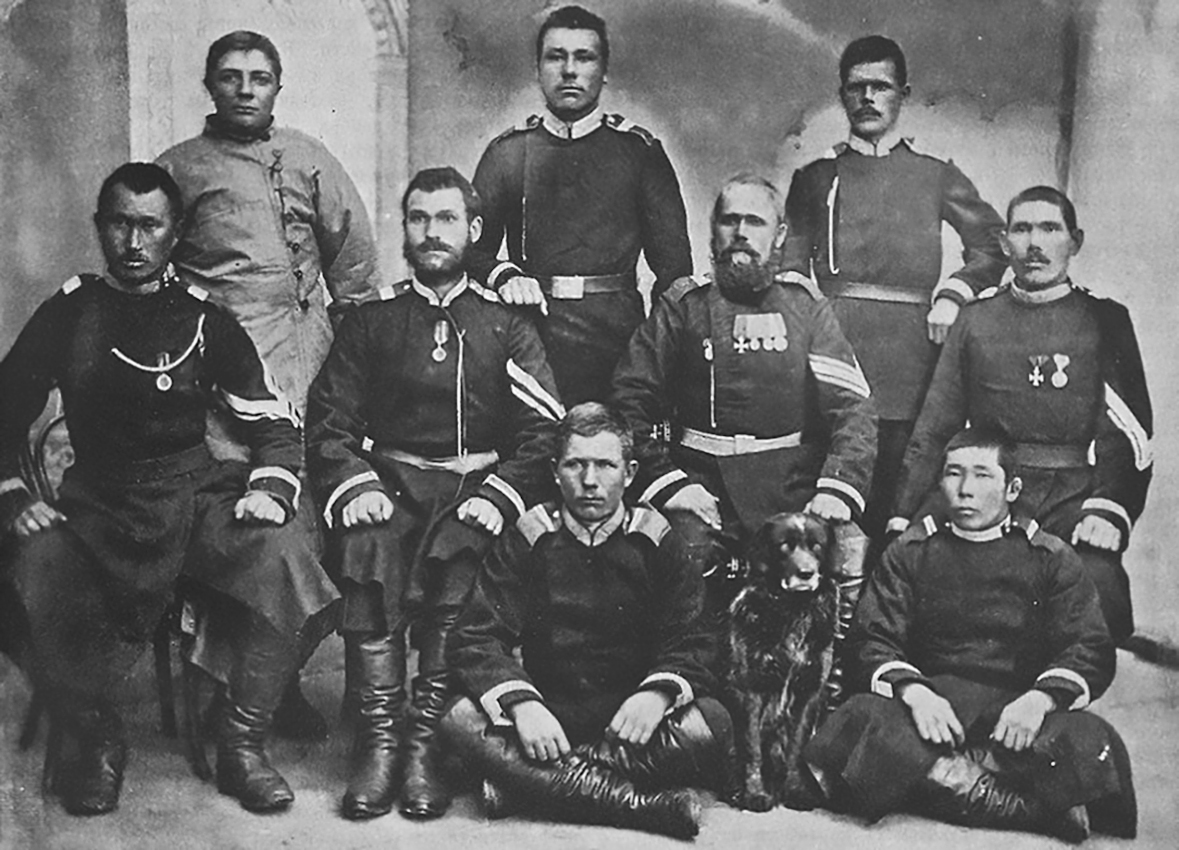On August 25, 1921, an organization called the Union of Young Revolutionaries (Boshgyg Halah Zaluuchuudyn Evlel) was set up in Ulaanbaatar. One of its key figures was Choibalsan. The Soviets, not long before, had given a similar name to a Chinese youth terrorist organization and the Mongolian version was a direct translation of the ideas behind this name.
Starkov was sent from Irkutsk to handle the daily activities of the organization that winter. This young courageous revolutionary man was given a Mongolian name, Zorigt (courageous), and together with Rinchino, he led the Union and cleverly used it to sow seeds of distention among the Mongolian leaders. Soon after its founding, when the Union was about to get its official seal, Chairman of the Central Committee Danzan and Prime Minister Bodoo, who did not like the offensive name of the Organization, re-christened it the Union of Revolutionary Youth (huv’sgalt Zaluuchuudyn Evlel).
The Russian Buriads, whose main objectives were to wage a revolution, do away with the feudal and lamas, and destroy the old system, found this youth organization very useful.
The newly-founded organization was so full of enthusiasm that by early December 1921, the first counter-revolutionaries were discovered. Forty-eight men from the Bogd Khan’s bodyguard, including its chief, the Sakya Lama, were arrested on charges of counter-revolutionary activity and executed; beginning of many years of terror in Mongolia. The Boshgyg Halah Zaluuchuudyn Evlel carried out the arrests and the executions.
For many years this hysterical youth organization was employed in toppling and annihilating, one by one, the state leaders of Mongolia, and it was the primary instrument for a power struggle among the Mongols. While Bodoo used the group to combat the old system, Danzan used it to destroy Bodoo, while Dambadorj employed it to overthrow Danzan, and Genden used it to topple Dambadoij, behind all of this was Rinchino.
Shumyatskii’s definition of the Mongolian Union of Young Revolutionaries
“The Union of Young Revolutionaries pursues a very lopsided policy. I am trying to convince its members that there is no need to blindly copy our Komsomol.
Lenin and the Third International
The Third International, commonly known as Comintern, was founded in Moscow by Lenin in March 1919. The Russian Bolsheviks, headed by Lenin, had broken away from the social-democratic movement a long time before. When the Bolsheviks’ revolution succeeded in Russia, they became confident that they ould carry out a similar revolution throughout the world.
Through the Third International, Lenin once again sought to unite the proletarians of all nations. This organization was called the Communist International, hence the term Comintern.
Lenin asked, “Can we consider that the present liberation movement and the post-war progress of the capitalists’ work in underdeveloped countries is the most important step? We will not necessarily give an answer to this question. If the Red revolutionary proletariat continuously agitates the people, and if the Soviet government uses all the means at its disposal, the capitalist way for underdeveloped countries is unnecessary.”
Lenin also taught that “the prime goal of an organization in backward countries is to abolish feudalism.” The task he set before the delegates of the Second All-Russian Congress of Far Eastern Nations in 1919 was to abide by the general theory of communism and adapt it to specific conditions, “to find and develop the best form of the specific union between the oppressed peoples of the Far East and the world proletariat.”
The Comintern existed between 1919 and 1943 with the objective of carrying out the global revolution. It conducted acts of terror worldwide, but by a quirk of fate, it succeeded primarily in the land of the nomadic Mongols, one of the most backward spots in the world. That was its only success. The rest of the theory of bypassing capitalism was to be creatively built on the spot by Bolshevik Commissars sent on missions to various backward regions.
As luck would have it, the Comintern’s operations to create a “worldwide revolution,” which reached an almost a global level and the many terrors it conducted, did not yield any results except for the single revolution in Mongolia.

